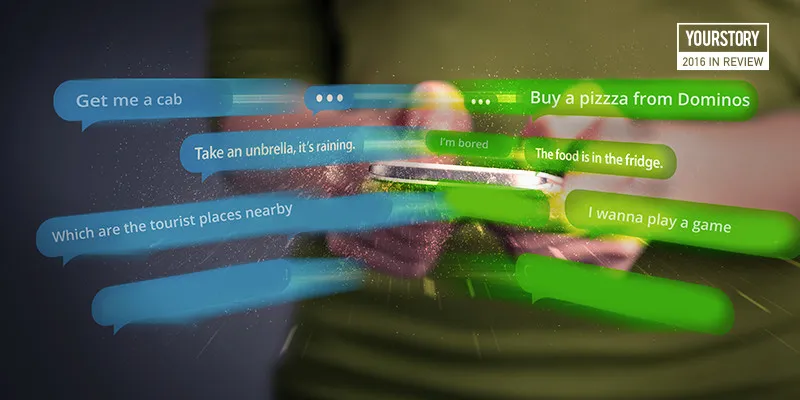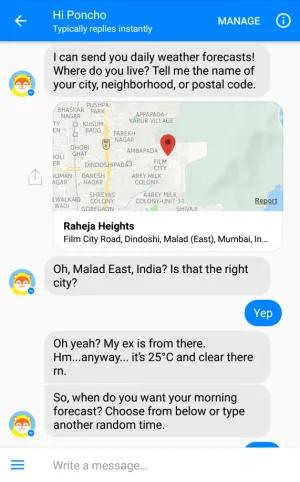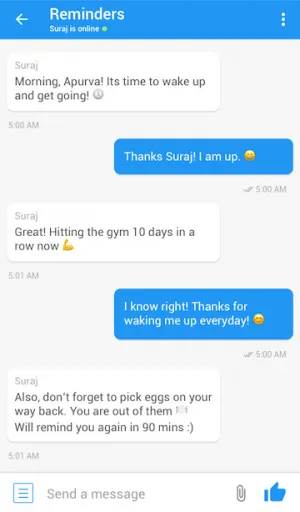2017 — the year of conversational user interface
2016 was the year of “conversational commerce” with ‘chatbot’ and ‘AI’ being the buzzwords for leading new age technology companies.
Last weekend, I was at one of India’s first hackathons with the theme of chatbots. Conveniently called Botathon, the event attracted close to 100 bot developers to build solutions over Facebook, Slack, Twitter, SMS, or any other platform that enables chatbots. There were a number of really “cool” products that came out of this event, but all of them left the audience wanting for more. Perhaps that signifies, in a lot of ways, the industry as a whole.

2016 was the year of “conversational commerce” with ‘chatbot’ and ‘AI’ being the buzzwords for leading new age technology companies. While Facebook and Apple opened up their messaging platforms to allow developers to build bots, Allo and Slack have invested money and energy in developer tools, all of which augurs well for the segment.
From an industry landscape perspective, it wasn’t too long ago when there was an app for everything and we’re fast approaching a time when there will be a bot for everything. However, there is also a contrarian view that chatbots might be more hype than reality. While we wait for the smoke to clear, let us understand the chatbot ecosystem as it stands today in light of technology, business, and the broader consumer internet landscape.
A good starting point is the definition of a chatbot, which, according to most experts, is described as “an interface that enables users to complete a task through conversational interaction with a machine and sometimes aided by a human.” It is not a machine masquerading as an individual, but simply a different type of interface to get things done, the success of which is determined by the way the interface is designed, and yet it is as much a design problem as it is a machine learning problem. And according to Satya Nadella, it is the next evolution of interfaces after the GUI. In fact, the term now being used is “CUI” = conversational user interface.

Why the big bet on CUI?
- Single-screen convenience: In a typical GUI, users need to move from one screen to another, and understanding the flow and structure of each new screen can be tedious. The problem gets aggravated as the number of differently designed apps increases each day.With CUI, all interactions happen on a single screen using a single mode of communication — text. According to an industry rule of thumb, a well-designed conversational user interface can result in up to 2x more conversion than their traditional GUI counterparts.
- Rise of the native chat users: Chat has become the most preferred interface on smartphones. According to a recent study, WhatsApp, SMS, Messenger, and other such text-based chat interfaces constitute 75 percent of the time people spend on their smartphones, which makes CUI a natural extension. This, combined with the ease with which it can be deployed across operating systems, is what makes it tick.
- Humanising the experience: Nir Eyal, the author of Hooked: How to Build Habit Forming Products, is a big believer in CUI and recently wrote about how it makes you feel like a friend. As we move into the CUI era, the one factor that will determine its success is how well we are able to humanise the experience — friendly chat messages, emojis, happiness, and everything else that comes with it. In fact, this is one of the most critical elements that separates a good CUI from a great one.


Poncho weather bot on Facebook Messenger Haptik Reminders bot
Like all emerging technologies, CUI too has its share of skeptics who have singled out the slow reaction times of chatbots as a point of concern. However, having seen multiple types of conversational use cases, the reason it has become a widespread notion is because of the assumption that the CUI is meant to solve complex problems and that each interaction needs to be typed, which leads to a lot of back and forth, which is not at all true with the modern CUI design. The best bots built this year are those that are solving simple tasks using a bunch of smart chat design elements that take existing use cases and turn them into engaging conversations that don’t take much time.
A few years ago, we witnessed the transition from websites to apps. Similarly, 2016 was the year we saw the first wave of the chatbot revolution when people were mostly trying to figure out the technology and see what could be done with it. However, this is a significantly bigger paradigm shift than the one from websites to apps. It will also be a long-drawn process because chatbots represent a massive shift in existing consumer behaviour that has existed for over two decades (imagine going from command-line interface to GUI). While it will take a bit longer for consumers and developers to understand best practices, the good news is that platforms such as Facebook, Google, Microsoft, and Slack are ramping up investment in their bot platforms, which will only enhance the space in the years to come.
We expect 2017 to be a watershed year for chatbots, which will begin with the second wave of chatbot-first use cases, things that only chatbots would be able to do. Something akin to what Instagram, Snapchat, or Shazam were for the app ecosystem; something that could not have been built on the web.
From an India perspective, the good news is that chatbots are one technology where the pace of innovation and adoption is at par with the US. Hundreds of bots have been built for the Indian market, and there is great interest from startups, developers, and brands alike. Whether it is e-commerce, enterprise solutions, or even marketing campaigns, 2017 will be the year when we see chatbots finding applications across the landscape.
(Disclaimer: The views and opinions expressed in this article are those of the author and do not necessarily reflect the views of YourStory.)







